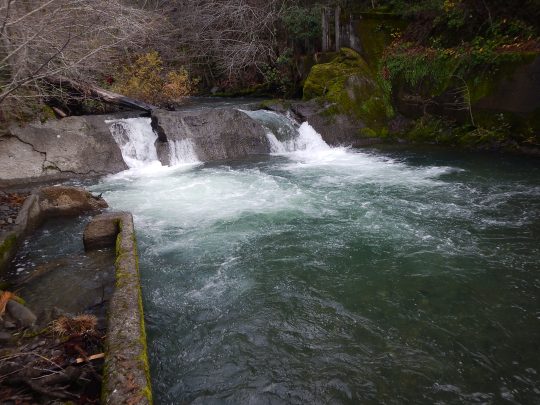CalTrout’s North Coast Projects Receive Funding Awards from CDFW
CalTrout’s North Coast region recently received almost $1M in funding from the California Department of Fish and Wildlife’s (CDFW) emergency drought funds for three ongoing projects. This area, the northern third of the California coast, is home to some of the most important salmon and steelhead rivers and watersheds in the state. Receiving large grant awards like these from natural resource agencies is key to ensuring CalTrout continues our work supporting fishery and watershed health for California.
South Fork Eel River Science Program
CDFW awarded CalTrout $113,000 for our South Fork Eel River Science Program. Additionally, several very generous private donors are supporting our science program. CalTrout is building this program in collaboration with UC Berkeley post-doc researcher and CalTrout staff scientist Dr. Gabe Rossi. Other project partners include CDFW, Stillwater Sciences, and the Wiyot Tribe. This research and monitoring program brings a strong focus to the South Fork Eel River – a fundamentally important salmon stronghold that hosts all three North Coast listed salmonids – Chinook, coho, steelhead, and an important focal watershed of huge past and ongoing restoration investment. The following three components of the project are now funded:
- Adult DIDSON SONAR monitoring
- Juvenile salmon and steelhead out-migration monitoring
- Non-native pikeminnow eradication and suppression research
Eel River Basin-wide Restoration Plan
CDFW awarded CalTrout $750,000 for our Eel River Restoration Plan. Working with our partners at Stillwater Sciences and McBain Associates, CalTrout seeks to outline an Eel River, basin-wide fisheries restoration plan. The Restoration Plan will be the most comprehensive assessment and planning document for the Eel River developed to-date. We will rely on agency, academic, non-profit, tribal, and other watershed experts to develop a roadmap for a robust and targeted restoration plan to guide restoration in the Eel River Watershed for decades.
Cedar Creek Barrier Removal
CDFW awarded CalTrout $120,000 for our Cedar Creek Barrier Removal project. Additionally, the project received $1.7M in funding from the WCB. With these two funding sources combined, CalTrout’s Cedar Creek project is now fully funded for implementation later this year. Cedar Creek has approximately nine miles of high-quality salmonid habitat currently inaccessible to South Fork Eel River Chinook, coho, and steelhead populations. Migration into the watershed is blocked by an 8-foot high concrete dam left behind when the Cedar Creek Experimental Fish Hatchery was decommissioned after the 1964 flood. CalTrout and our partners McBain Associates and Hanford are currently preparing engineering designs and construction plans for the removal of the fish barrier. Once implemented, this will allow migration into Cedar Creek in perpetuity during all life stages for Chinook, coho, and steelhead.

Cedar Creek






1 Comment
Thank you for all that you do.
I find it difficult in explaining to my grandchildren why the State of California and the United States Government allowed the destruction of our fisheries along the northwestern regions of the United States. They ask my why has not the Department of Fish and Wildlife in California taken a more aggressive role in protecting their environment. Well, I do not have that answer so maybe you may explain to me why have they not? I will share your answer with them…
Thank you,
Lawrence Gonzi
916.549.6673